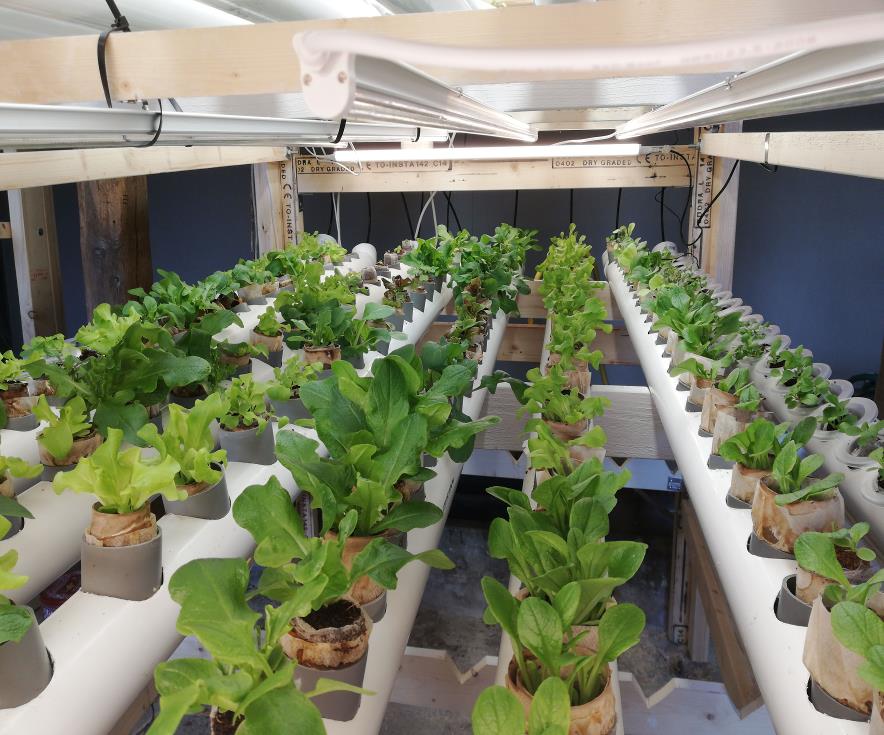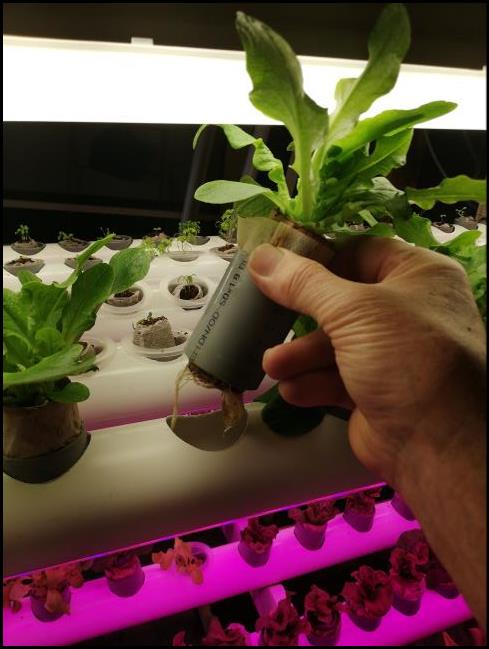
|
International Development Advisors |
|
Building training and research standards for innovation and sustainable outcomes |
|
Producing fresh greens (microgreens, babygreens, mature salads and herbs) in traditional Swedish farm buildings
|
|
Copyright Nakhlatec 2020 24 August 2020 |


|
One approach to increasing fresh green production for urban and rural populations in Sweden and many other countries (to increase resilience and self sufficiency in times of crisis as evidenced by the Covid-19 pandemic) is to make use of the considerable space available in farm buildings located close to the outskirts of towns and other urban centres. This might reduce the need for so-called plant factories (vertical farming) within urban areas. Why can’t redundant farm buildings near urban centres be “recycled” and then build on producer-consumer interactions such as farmer’s markets and their digitalised versions like REKO-rings? Some of NAKHLATEC’s recent innovation work in 2018 to 2020 has involved developing hydroculture (water gardening) systems to exploit this untapped resource. Two examples are shown here.
The RecycFlo™ is a scaleable modular salad and herb growing system designed for peri-urban horticulture. A simple angled structure (6 m2 floor space x 2m in height) made of locally available timber with adjustable bolted joints is fitted with 12v DC pumps, timers and commercially available LEDs (all obtainable through international gadget suppliers via the internet). It produces 1 000 high quality salads and herbs every 5 weeks year-round even when temperatures in a barn are 1-3o C during winter months. This is achieved using piping systems carrying warmed (20—25oC) nutrient solutions (provided as either standardised or organically-derived alternatives) to the root zones. A specially designed reusable plant holder system ensures resilience of plants to perturbations in temperatures in the farm building as well as unexpected technical breakdowns or disruptions in electricity supply. Productivity in terms of salad/herb qualities and biomass obtained (usually between 2-3 g fresh weight gain/plant/day), as well as economic returns using a range of different set-up cost options, are currently being evaluated in the farm-based testbed shown below. Growing fresh greens by rapid flow recycling conserves water and nutrients (avoiding wastage and pollution). A range of rigs of varying sizes can be housed in traditional farm buildings. Job creation for younger members of rural communities with a focus on local commercial production of fresh nutritious vegetables for both urban and rural communities is an important target of this initiative. The systems being tested can sustain year round locally produced pesticide–free fresh leafy greens and herbs (so-called “barngreens”) for direct farm gate sales and/or supply and sale at farmers’ markets (eg. social media-managed REKO-rings) located in or near urban centres. The upper three pictures also show a readily scalable box culture system (called thrubox) for producing microgreens and babygreens on wooden pallets without the need for continuous recycling of nutrient media. This is possible and applicable to many salads and herbs through the deliberate use of novel inert growing support materials having contrasting porosity and moisture holding capacities. |












|
For further details on the Barngreens peri-urban concept using the hydroponic systems featured on this page, please contact:
info@barngreens.com |
|
Water cress |
|
Mustard |
|
Mixed salads |